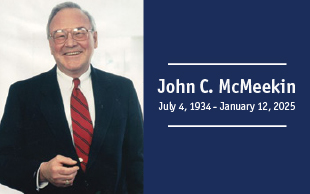Sabrina Thigpen and Sam Tiru are originals.
Their supervisor, PHMC Associate Program Director Teresa Lamore*, calls them pioneers.
Tiru uses a more self-effacing term. “We’re the last of the Mohicans,” he says with a chuckle.
For the last two decades Thigpen, an outreach program coordinator, and Tiru, a care outreach field specialist, have been at the forefront of PHMC’s HIV prevention street outreach efforts, spearheading the program when it first began in the late 1980s at the height of the AIDS epidemic. First dispatched to North Philadelphia, Thigpen and Tiru have since crisscrossed nearly every corner of the city, distributing educational materials and forging unlikely relationships in some of the roughest neighborhoods.
In a world increasingly beholden to fiber optics, the place of street outreach certainly seems tenuous. Just recently, in the field of HIV outreach, the CDC administered a much-discussed Twitter town hall meeting for its national testing day. Meanwhile, new campaigns like the Greater Than AIDS initiative rely on the bedrock of mass communication, almost completely eschewing door-to-door efforts. Amidst online support groups such as Daily Strength and informational one-stops like WebMD, human interaction feels quaint, almost obsolete.
And yet, PHMC has maintained its street outreach efforts through the digital revolution. Initiatives such as the Philadelphia Hepatitis Outreach Project, the Philadelphia HIV/HCV Prevention Street Outreach Project, and the addiction recovery-focused New Pathways Project continue to play major roles in PHMC’s efforts, signaling the organization’s steadfast commitment to personal service delivery.
To understand that commitment one need only understand Thigpen and Tiru.
Both approach their jobs from intensely personal perspectives. Tiru watched a childhood friend succumb to AIDS in the disease’s earliest days while Thigpen saw the virus ravage her father. Having grown up in the neighborhoods they first walked, Thigpen and Tiru felt the weight of their work innately. “We went into shooting galleries and crack houses like it was going home,” Tiru says.
Twenty years later both insist that their work holds the same indispensable value. “If we’re not out there,” Thigpen asserts, “the community doesn’t get the information they need.”
Citing the continued technological gap between rich and poor, Thigpen and Tiru note that many of those in the communities they serve simply don’t have access to the Internet or cell phones. “You have to be there and meet them where they are,” Thigpen says.
But if someday the digital divide evaporated?
“Nothing compares to knocking on someone’s door,” Tiru insists. “It says we care about you and we need you to come back to the clinic and get better.” Lamore agrees. “It’s something about that human connection that sets outreach apart,” she says.
The stories Thigpen and Tiru tell—tales of crushing despair and unlikely resurgence—reveal the truth in that statement. Thigpen still mournfully recalls the scene of a broken mother prostituting her four daughters, just as she celebrates the triumph of a former addict turned local barbershop mogul.
Tiru tells of a heroin user named Seville who used to serve as the “gatekeeper” at a shooting gallery in Germantown. “They used to call him Seville because he’d steal the Cadillac emblem from cars and string it around his neck,” Tiru says. After working with Seville for a time, Tiru finally lost him in the shuffle of raids, busts, and rehab visits.
Fifteen years later, while walking in Center City, Tiru felt a man tap him on his shoulder. He asked whether Tiru knew him. Tiru said he didn’t and, when the man introduced himself as Seville, Tiru stood shocked. “He looked transformed,” Tiru says.
Around his neck Seville wore the same chain, except that now the string held a gold-cut pendant reading “N.A.,” the abbreviated symbol for Narcotics Anonymous.
Reaching into his wallet, Seville pulled out a faded business card and handed it to Tiru. It was Tiru’s business card, the same one he gave Seville nearly two decades prior. “He still had that card,” Tiru says, shaking his head as if he still can’t grasp the impact he’s had on so many lives.
These moments validate Thigpen and Tiru, both personally and professionally. As Eugenia Argires, the PHMC program director responsible for all these projects, explains, “We [in outreach] don’t just slap a piece of paper in front of someone...we forge relationships.”
Thigpen and Tiru are so good at it that they’ve become public liaisons for Philadelphia’s most underserved areas, guiding community activists, Philadelphia Inquirer reporters, and even top Centers for Disease Control and Prevention officials through the battered streets they know so well.
The minor celebrity hardly fazes them though, and both seem more motivated by their communities than their connections. “They’re the ones helping us,” Thigpen says of the resilient clients who continue to inspire her. “Even though we’re out to give, they give to us.”
Suddenly the future of street outreach feels secure.
“We’ll be there with canes and wheelchairs doing outreach,” Thigpen says with a hearty laugh.
The manifest joy in her voice makes it hard not to believe her, and the essential goodness of her work makes one wish for such things to come true.
*Teresa Lamore served in this role at the time this story was written. She has since left PHMC.





